Papers by Adriana C S Melzer

In the municipality of Pedreira in São Paulo State, Brazil, a large number of workers from the ce... more In the municipality of Pedreira in São Paulo State, Brazil, a large number of workers from the ceramic industry have left their jobs because of work related musculoskeletal disorders. The objectives of this study were to describe the work conditions pertaining to the ceramic industry, to determine the prevalence of musculoskeletal pain and to identify the associations between symptoms and organizational, biomechanical, psychosocial and individual variables. Nine ceramic manufacturers participated. The activities of 18 individuals were analyzed through direct observation. All workers answered a questionnaire about work and health (n = 235). The results found that the general working conditions in the pottery manufacturers were poor. A 38.5% prevalence of musculoskeletal pain was found. Repetition, tool use, lack of control over decisions, worries regarding work demands, relationship issues, work dissatisfaction and the wish to move on to another function were all associated with pain...
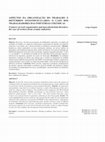
DOAJ (DOAJ: Directory of Open Access Journals), Jan 4, 2012
Features of work organization and musculoskeletal disorders: the case of workers from ceramic ind... more Features of work organization and musculoskeletal disorders: the case of workers from ceramic industries RESUMO Objetivo: Descrever, com base nas percepções de trabalhadores adoecidos e na análise das atividades de trabalho, as exigências relacionadas à organização do trabalho nas indústrias cerâmicas e sua relação com o desenvolvimento de distúrbios osteomusculares. Métodos: Realizou-se estudo exploratório em duas localizações distintas, um serviço público de fisioterapia e uma indústria de pequeno porte, ambos em Pedreira. Nove pessoas afastadas por DORT participaram de entrevistas semi-estruturadas, seguindo a pergunta norteadora: "Como é o seu trabalho?". As atividades de trabalho de três indivíduos foram analisadas segundo o referencial da ergonomia, seguindo um roteiro de observação. Resultados: Os resultados destacaram a presença de fatores que indicam que o modelo de organização do trabalho adotado nessas indústrias está associado com DORT. Nos depoimentos obtidos, exigências de comprometimento com os objetivos e metas de produtividade, e ritmo elevado emergiram em diferentes momentos. Conclusão: Ritmo elevado, exigências de produção, prolongamento da jornada e aspectos relacionados ao ambiente social de trabalho, não permitem a adoção de estratégias de enfrentamento dos riscos, possibilitando o desenvolvimento dos distúrbios osteomusculares.
Cadernos De Psicologia Social Do Trabalho, Dec 1, 2005
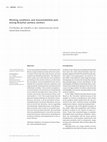
Cadernos de Saúde Pública, 2010
In the municipality of Pedreira in São Paulo State, Brazil, a large number of workers from the ce... more In the municipality of Pedreira in São Paulo State, Brazil, a large number of workers from the ceramic industry have left their jobs because of work related musculoskeletal disorders. The objectives of this study were to describe the work conditions pertaining to the ceramic industry, to determine the prevalence of musculoskeletal pain and to identify the associations between symptoms and organizational, biomechanical, psychosocial and individual variables. Nine ceramic manufacturers participated. The activities of 18 individuals were analyzed through direct observation. All workers answered a questionnaire about work and health (n = 235). The results found that the general working conditions in the pottery manufacturers were poor. A 38.5% prevalence of musculoskeletal pain was found. Repetition, tool use, lack of control over decisions, worries regarding work demands, relationship issues, work dissatisfaction and the wish to move on to another function were all associated with pain...
Cadernos de Psicologia Social do Trabalho, 2005

Fisioterapia e Pesquisa, 2008
Distúrbios osteomusculares relacionados ao trabalho (DORT) atingem trabalhadores de diversas ocup... more Distúrbios osteomusculares relacionados ao trabalho (DORT) atingem trabalhadores de diversas ocupações e constituem um dos maiores problemas de saúde em muitos países. Este estudo foi realizado em dois setores de fiação de uma mesma indústria têxtil, sendo um deles tecnologicamente mais moderno. Os objetivos foram identificar os fatores de risco físicos e organizacionais associados aos DORT nos dois setores e determinar a prevalência de sintomas de dor entre esses trabalhadores. Tendo como referencial a análise ergonômica, foram observadas as atividades de trabalho de 12 indivíduos; e 50 trabalhadores responderam a um questionário. Os fatores de risco físico identificados foram os seguintes: posturas inadequadas de ombro, trabalho na posição em pé, repetitividade de movimentos e aspectos ambientais desfavoráveis. Os fatores organizacionais identificados foram: ritmo intenso de trabalho, fragmentação e invariabilidade das tarefas, inexistência de pausas e impossibilidade de comunicaç...
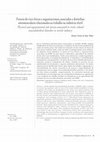
Fisioterapia&Pesquisa, 2007
Work-related musculoskeletal disorders (WRMD) affect workers in several occupations and are one o... more Work-related musculoskeletal disorders (WRMD) affect workers in several occupations and are one of the major health problems in many countries. This study was developed in two sectors of a textile industry, one of them being technologically more advanced. The objectives were to identify physical and organizational risk factors associated to WRMD in the two sectors and estimate prevalence of pain among these workers. The workplace and working activity of 12 individuals were observed on ergonomic grounds, and 50 workers answered a questionnaire. The following physical risk factors were identified: awkward shoulder postures, standing work position, repetitive movements, and unfavourable environmental features. Main organizational risk factors identified were: intense work pace, uneven and repetitive tasks, absence of pauses and impossibility of communication with peers. Pain symptoms prevalence of 60% and 76% was found in the two sectors. Conclusion shows that investments in technology that do not follow changes in work condition and organization may result in maintenance or aggravation of risk situations associated to WRMD.

Revista Brasileira em Promoção da saúde 21(3), 2012
Objective: To describe, based on the perceptions of disabled workers and on the analyses of worki... more Objective: To describe, based on the perceptions of disabled workers and on the analyses of working activities, the requirements related to the work organization in ceramic industries and its association with the development of musculoskeletal disorders. Methods: An exploratory and qualitative study held in two distinct locations, a public Physiotherapy facility and a small size industry, both in Pedreira. Nine disabled workers diagnosed with Work Related Musculoskeletal Disorders (WRMD) participated in semi-structured interviews, which followed a guide question: “How is your work?”. The work activities from three active workers were analyzed based on ergonomics, following an observation guide. Results: The results highlighted the presence of factors that indicate that the model of work organization adopted by these industries is associated with WRMD. In the obtained reports, requirements of commitment with objectives and production goals, and fast work pace arouse in different moments. Conclusion: Fast work pace, production requirements, extended working hours and aspects related to the social work environment do not allow workers to adopt strategies to cope with risks, leading to the development of musculoskeletal disorders.
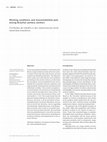
Cadernos de Saúde Pública, 2010
In the municipality of Pedreira in São Paulo State, Brazil, a large number of workers from the ce... more In the municipality of Pedreira in São Paulo State, Brazil, a large number of workers from the ceramic industry have left their jobs because of work related musculoskeletal disorders. The objectives of this study were to describe the work conditions pertaining to the ceramic industry, to determine the prevalence of musculoskeletal pain and to identify the associations between symptoms and organizational, biomechanical, psychosocial and individual variables. Nine ceramic manufacturers participated. The activities of 18 individuals were analyzed through direct observation. All workers answered a questionnaire about work and health (n = 235). The results found that the general working conditions in the pottery manufacturers were poor. A 38.5% prevalence of musculoskeletal pain was found. Repetition, tool use, lack of control over decisions, worries regarding work demands, relationship issues, work dissatisfaction and the wish to move on to another function were all associated with pain. We concluded that musculoskeletal pain is one of the outcomes of elevated human requirements resulting from working conditions and organization in the ceramic industry.
Thesis Chapters by Adriana C S Melzer
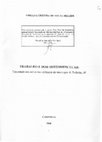
Tese Unicamp, 2008
Abstract: Background: This study was developed in the municipality of Pedreira, SP, Brazil, where... more Abstract: Background: This study was developed in the municipality of Pedreira, SP, Brazil, where the main industrial activity is the ceramic production. A large number of workers from these industry have left their jobs because of Work Related Musculoskeletal Disorders (WRMD). Objectives: To describe work conditions and organization pertaining to the ceramic industry, to determine the prevalence of pain among active workers and to identify the associations between symptoms and organizational, biomechanical, psychosocial and individual variables. Methods: The study was developed in two complementary stages. In the years 2003 and 2005 an exploratory study was carried out, divided in two steps: the description of the production activities developed in one ceramic manufacturer in Pedreira, by means of an ergonomic approach, and a description of the job and illness progression of workers with WRMD, using interviews. In the years 2006 and 2007, a systematic, descriptive and cross-sectional study was carried out. Nine ceramic manufacturers participated in this stage. The activities of 18 individuals, two in each company, were described and analyzed through the direct observation method. All workers answered a questionnaire about work and health (n=235). An additional questionnaire for the assessment of minor psychological disorders was applied to 57 subjects. Results: In general, the work conditions in the ceramic industry were found to be poor. The physical environment was unhealthy, as workers are exposed to several health risks, including those originated from silica dust, high temperatures and noise, low ventilation, inadequate flooring conditions and absence of safety gear. The work organization is based in the division of tasks and pace control in order to achieve the production demands. Men and women do not perform activities with the same characteristics, indicating a clear work division according to gender. Production workers are assigned repetitive activities, executed in a fast pace, using static and awkward postures. A 38.5% prevalence of musculoskeletal pain over the past 12 months was found, mostly localized in the lower limbs, back and neck. A relationship was identified between musculoskeletal pain and the female gender. Among the biomechanical and psychosocial variables, repetitiveness, tool using, lack of control over decisions, worries regarding work demands, relationship issues with supervisors, work dissatisfaction and wish to move on to another function, were associated with pain. Conclusions: Musculoskeletal pain is one of the outcomes of elevated social and human requirements resulting from work conditions and organization in the ceramic industry. The work environment and use of outdated equipment, the work division,
repetitiveness of the activities, selective mechanization and fast pace are components in the development of pain. The higher prevalence of pain among women is related to their allocation in different sectors and activities, submitting them to a more repetitive and static work, executed in more accelerated pace, with less autonomy and low salaries. People are
working with pain. Seeking medical service is delayed until the worker's capacity has compromised their ability to maintain the work schedules. Medication ends up as the only alternative found by workers to carry on with their duties





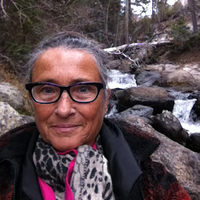





Uploads
Papers by Adriana C S Melzer
Thesis Chapters by Adriana C S Melzer
repetitiveness of the activities, selective mechanization and fast pace are components in the development of pain. The higher prevalence of pain among women is related to their allocation in different sectors and activities, submitting them to a more repetitive and static work, executed in more accelerated pace, with less autonomy and low salaries. People are
working with pain. Seeking medical service is delayed until the worker's capacity has compromised their ability to maintain the work schedules. Medication ends up as the only alternative found by workers to carry on with their duties
repetitiveness of the activities, selective mechanization and fast pace are components in the development of pain. The higher prevalence of pain among women is related to their allocation in different sectors and activities, submitting them to a more repetitive and static work, executed in more accelerated pace, with less autonomy and low salaries. People are
working with pain. Seeking medical service is delayed until the worker's capacity has compromised their ability to maintain the work schedules. Medication ends up as the only alternative found by workers to carry on with their duties